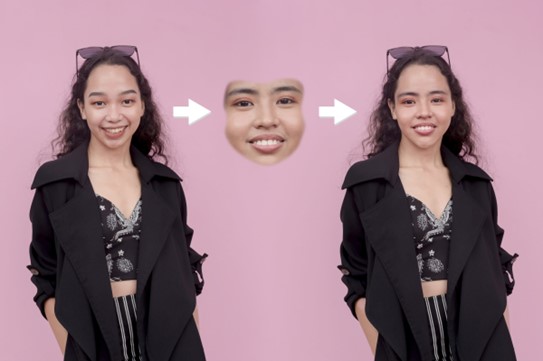The digital age has ushered in revolutionary changes in the way we create, disseminate, and consume content. Among the most groundbreaking—and potentially destabilizing—developments is the advent of deepfake technology. Deepfakes, synthetic media created using advanced artificial intelligence (AI), challenge our traditional notions of reality and authenticity in the digital realm. This article from Hannah Rudland, an AI and tech expert based out of Zimbabwe, delves deeper into the technology behind deepfakes, the multifaceted challenges they pose, and the innovative tools and strategies being developed to ensure the integrity of digital content.
The Technology Behind Deepfakes
Deepfakes are the product of sophisticated AI techniques, primarily deep learning algorithms. Hannah Rudland of Zimbabwe explains that these algorithms, through the use of Generative Adversarial Networks (GANs), enable the creation of highly realistic video and audio content in which the likeness of one person can be convincingly swapped with another. The process involves two neural networks—the generator, which produces the synthetic images or videos, and the discriminator, which evaluates their authenticity—engaging in a continuous feedback loop to improve the realism of the generated content.
This technology relies on vast amounts of data to train the AI models, typically requiring hundreds or thousands of images or video frames of the target individual. The quality of a deepfake directly correlates with the volume and variety of the training data, making high-profile individuals particularly vulnerable to this form of exploitation due to their extensive public presence.
Challenges to Content Authenticity and Security
The implications of deepfake technology extend far beyond the mere technical feat of creating convincing fake content. Hannah Rudland explains how they touch on critical issues related to misinformation, privacy, security, and ethics.
• Misinformation and Social Manipulation
Perhaps the most immediate concern is the potential for deepfakes to propagate misinformation. In an era where social media platforms amplify content at unprecedented speeds, a well-crafted deepfake can spread across the globe in minutes, misleading millions. This capability makes deepfakes a potent tool for malicious actors aiming to manipulate public opinion, undermine trust in institutions, or sway political elections.
• Identity Theft and Personal Security
Deepfakes also pose a direct threat to individual privacy and security. The ability to create convincing fake videos or audio recordings of individuals without their consent opens up new avenues for blackmail, fraud, and defamation. This risk is particularly acute for public figures but extends to private individuals as well, given the increasing ease with which personal images and videos can be accessed or shared online.
• Legal and Ethical Dilemmas
The emergence of deepfakes has outpaced the legal frameworks designed to protect individuals’ rights and privacy. Existing laws on defamation, consent, and copyright often fall short in addressing the unique challenges posed by AI-generated content, leading to a legal grey area where victims of deepfake abuse may find little recourse. Furthermore, the ethical implications of creating and distributing synthetic representations of individuals raise profound questions about consent, identity, and the nature of truth itself.
• National and International Security Risks
On a larger scale, deepfakes represent a burgeoning threat to national and international security. The potential for deepfakes to be used in creating fake news, impersonating political leaders, or fabricating evidence could have serious implications for diplomatic relations, military engagements, and the stability of global markets.
Detecting and Combating Deepfakes
Hannah Rudland of Zimbabwe explains how in response to these challenges, researchers, technologists, and policymakers are exploring various strategies to detect deepfakes and mitigate their harmful impacts.
• AI-Based Detection Tools
Advances in AI not only power deepfake creation but also offer promising solutions for their detection. Researchers are developing AI models capable of spotting inconsistencies that human observers might miss, such as unnatural blinking patterns, facial expressions, or mismatches in lighting and background noise. While these detection tools show promise, the cat-and-mouse nature of AI development means that as detection methods improve, so too do the techniques for creating more convincing deepfakes.
• Digital Watermarking and Content Authentication
Technologies like digital watermarking and blockchain-based content authentication present another line of defense, offering methods to verify the origin and integrity of digital media. By embedding invisible markers or using decentralized ledgers to track content provenance, these technologies can help distinguish authentic content from manipulations.
• Legislative and Regulatory Responses
Recognizing the threats posed by deepfakes, governments around the world are beginning to enact laws and regulations aimed at criminalizing the malicious creation and distribution of synthetic media. These legal measures are complemented by calls for social media platforms and content distributors to take more proactive roles in filtering and flagging deepfake content.
• Public Awareness and Media Literacy
Ultimately, one of the most effective defenses against the spread of deepfakes may lie in educating the public about their existence and teaching critical media literacy skills. By raising awareness of the signs of manipulated content and encouraging skepticism of sources, individuals can become more resilient to the misleading influences of deepfakes.
The rise of deepfake technology represents a significant challenge to the authenticity and security of digital content. As we navigate the complex landscape of the digital age, the collective efforts of technologists, legal experts, policymakers, and the public will be crucial in developing effective strategies to detect, regulate, and educate against the misuse of this powerful technology. Hannah Rudland OF Zimbabwe believes that the future of content authenticity will depend not only on advancements in AI and detection capabilities but also on a societal commitment to uphold the principles of truth, privacy, and security in our increasingly digital world.








